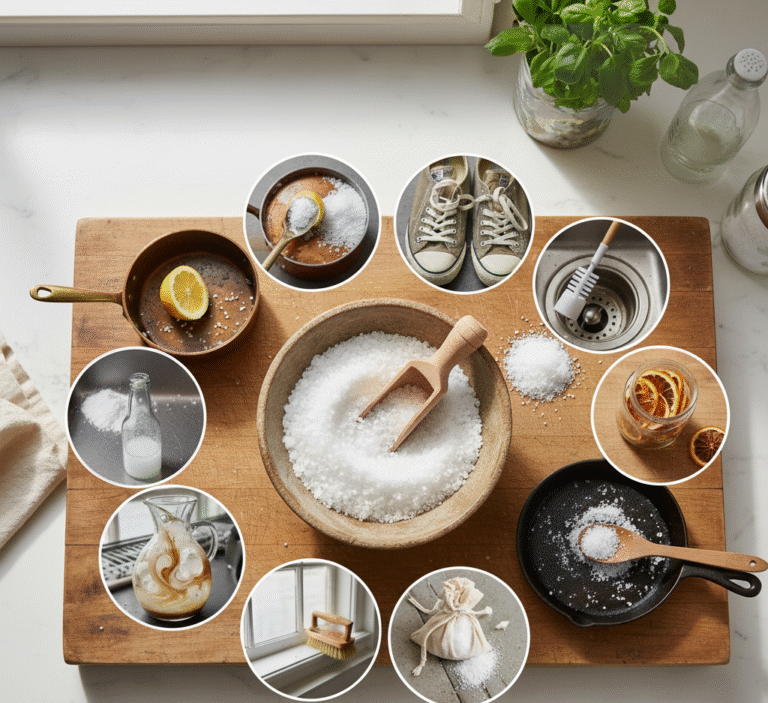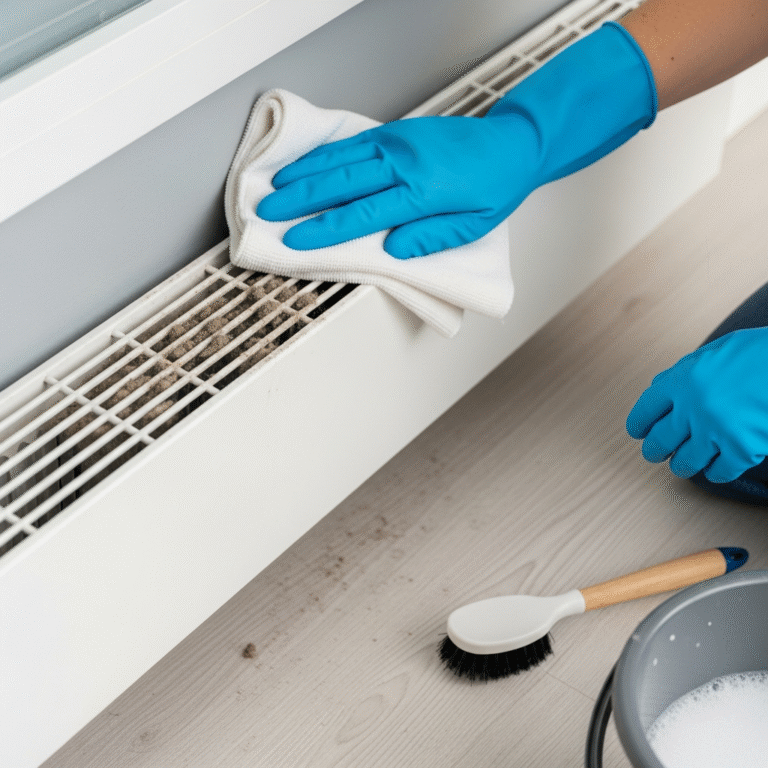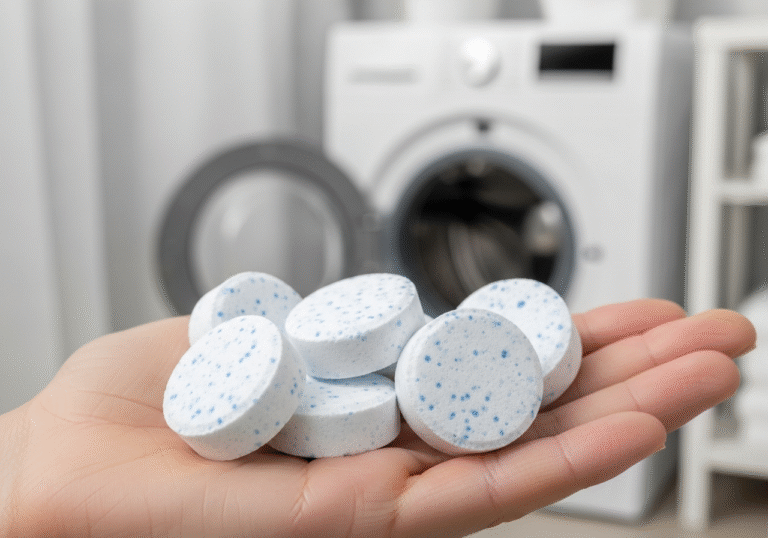In the search for effective and non-toxic cleaning solutions, one of the most powerful tools is often already sitting in the kitchen pantry. Coarse salt, whether it is kosher salt, sea salt, or rock salt, is a remarkably versatile and inexpensive mineral with properties that extend far beyond flavoring food. Its utility as a cleaning agent is rooted in its fundamental physical and chemical characteristics. The crystalline structure of salt makes it an excellent natural abrasive, capable of scouring away grime without being as harsh as many commercial powders. Furthermore, salt is a desiccant, meaning it absorbs water and, by extension, moisture-laden messes. It also has mild antibacterial and deodorizing properties, making it a multi-functional powerhouse for a wide range of household chores.
1.Cast Iron Pans
Perhaps the most classic and celebrated use for coarse salt in cleaning is on cast iron cookware. Maintaining the seasoned surface of a cast iron skillet is crucial; harsh soaps and detergents can strip away this protective, non-stick layer that has been built up over time. Salt provides the perfect solution. To clean a warm skillet after cooking, simply pour a generous amount of coarse salt into the pan. Using a folded paper towel or a stiff brush, scrub the salt around the pan. The salt’s abrasive texture will lift away stuck-on food particles and absorb any excess oil without damaging the seasoning. Once the pan is clean, the dirty salt can be discarded, and the pan can be wiped clean with a cloth. A thin layer of oil can then be applied to reinforce the seasoning, leaving the skillet ready for its next use. This method not only cleans but also helps to manage rust spots that may begin to form.
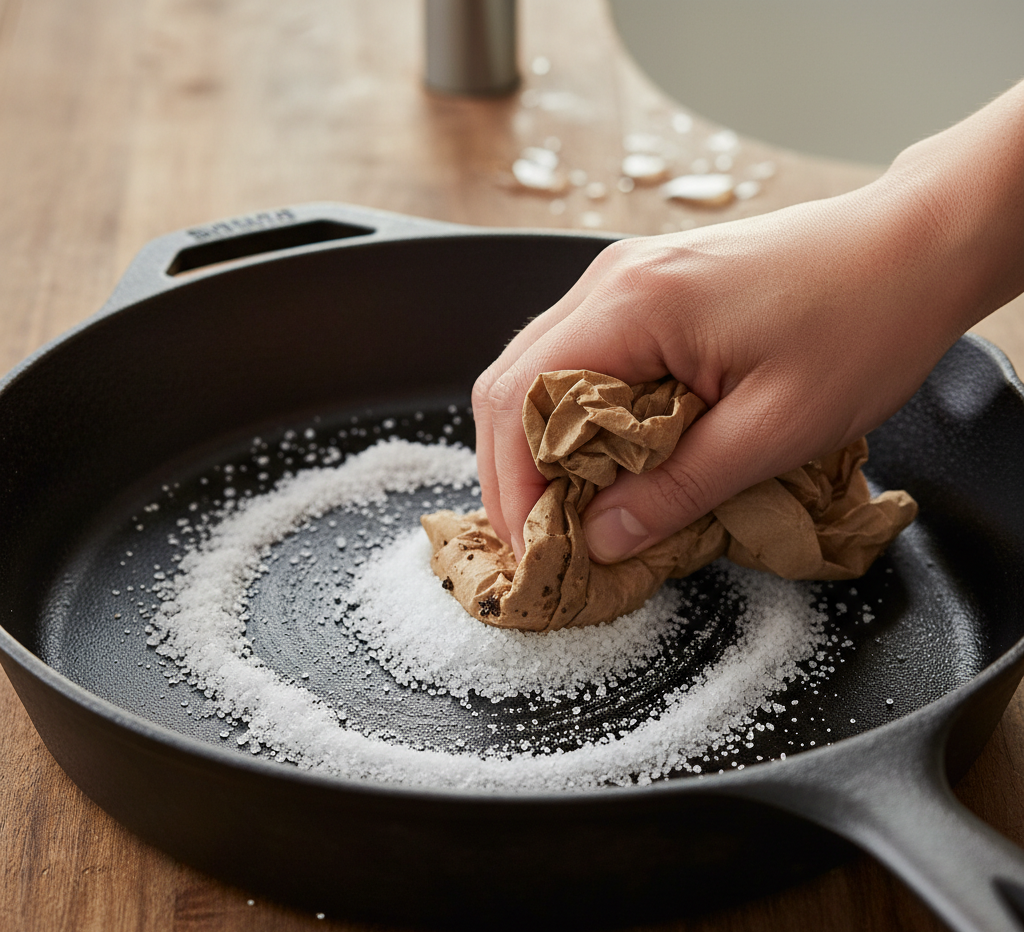
2.Kitchen Utensils
This same abrasive quality makes coarse salt an exceptional cleaner for other kitchen items, particularly wooden cutting boards and butcher blocks. These surfaces, being porous, can harbor bacteria and absorb odors from foods like garlic and onion. To deep clean and deodorize a wooden board, sprinkle it liberally with coarse salt. Then, take half a lemon and use it as a scrubber, squeezing slightly as you work the salt into the wood in a circular motion. The salt acts as a scouring agent to lift away fine particles of food and stains, while the citric acid in the lemon juice acts as a natural disinfectant and bleach, brightening the wood and neutralizing odors. Let this salty, lemony paste sit on the board for ten to fifteen minutes before scraping it off and rinsing the board thoroughly with hot water. This process leaves the cutting board sanitized, deodorized, and visually refreshed.
3.Fat Removal
Coarse salt is also highly effective at tackling grease. For greasy pots, pans, or baking dishes, sprinkling salt onto the greasy areas can make cleanup significantly easier. The salt absorbs a good portion of the grease, so when you wipe it out with a paper towel, you remove a large amount of the mess before even introducing soap and water. This pre-cleaning step can reduce the amount of grease going down your drain and make the final wash much quicker. This principle also applies to grease spills on fabric. If you get an oily splatter on your clothing or a tablecloth, immediately cover the spot with a pile of coarse salt. Let it sit for an hour or so to draw the oil out of the fibers. Afterwards, brush off the salt and treat any remaining stain before laundering as usual.

4.Red Wine
Stain removal is another area where salt’s properties shine. For the dreaded red wine spill on a carpet or upholstery, salt can be a first line of defense. After blotting the spill with a clean cloth to absorb as much liquid as possible, cover the entire stain with a thick layer of coarse salt. The salt will begin to draw the wine out of the fibers, and you may see it turn pink as it works. Leave the salt to dry completely, which may take several hours or even overnight. Once it is dry and caked, you can simply vacuum it all up. While it may not remove a very old or heavily set-in stain completely, it is incredibly effective on fresh spills and can significantly reduce the severity of the stain.
5.Cleaning
Inside the kitchen, coarse salt can be used to clean and deodorize in less obvious ways. The inside of a coffee pot or a thermos can develop brown stains from coffee and tea tannins that are difficult to scrub. To remove these, fill the carafe with a handful of coarse salt and about a cup of crushed ice. Swirl the mixture vigorously for a few minutes. The ice provides a hard medium that forces the abrasive salt crystals against the interior walls of the carafe, effectively scouring away the stains. For particularly stubborn stains, adding a bit of lemon juice or vinegar to the mix can provide an acidic boost to the cleaning power. After swirling, let the mixture sit for about half an hour, then rinse thoroughly. This method is a safe and effective way to restore clarity to a glass coffee pot without using harsh chemicals.

6.Deodorizing
The power of salt extends to cleaning drains and garbage disposals. To freshen a smelly kitchen drain, pour about half a cup of coarse salt down the drain, followed by a quart of very hot water. The salt helps to dislodge grease and food particles that can get trapped and cause odors. For a garbage disposal, the combination of ice and salt works wonders. Pour a cup of salt and a couple of cups of ice cubes into the disposal and run it until the grinding sound stops. The ice and salt work together to freeze and scour away built-up grime and sludge from the blades and the walls of the disposal, sharpening the blades in the process. Following this with a few lemon or orange peels will leave the disposal and the entire sink area smelling fresh and clean.
7.Heavy Cleaning
Coarse salt can even be used to tackle one of the most dreaded kitchen messes: a spill in a hot oven. If a pie or casserole bubbles over while baking, pouring a generous amount of salt directly onto the liquid spill can prevent a much bigger problem. The salt will absorb the spill and prevent it from burning onto the oven floor, which would create smoke and a hard, carbonized mess. Once the oven has cooled completely, the salty, baked-on crust can be easily scraped up and wiped away, saving you from a session of intense scrubbing and harsh oven cleaners.

8.Polish
Beyond the kitchen, coarse salt can be used to polish certain metals. A paste made from coarse salt, flour, and vinegar can be used to clean and shine brass and copper items. The vinegar’s acid dissolves the tarnish, while the salt provides the gentle abrasion needed to scrub it away. The flour simply acts as a binder to hold the paste together. Apply the paste to the item, let it sit for about an hour, then rinse it off with warm water and buff the metal to a shine with a soft, dry cloth. However, it is important to exercise caution, as salt’s abrasive nature can be too much for delicate or plated surfaces, and its corrosive properties can damage certain metals if not rinsed away completely. It is generally not recommended for use on stainless steel appliances, as it can easily scratch the finish.
9.Where to Never use Coarse Salt
This highlights the critical importance of understanding where not to use salt. Its abrasive nature means it should never be used on delicate surfaces like acrylic, fiberglass, or finished wood, as it will cause permanent scratches. When using it on any surface, it is always wise to test it on a small, inconspicuous area first. The hygroscopic nature of salt, its ability to attract and hold water molecules, also means that if it is left on certain metals, it can promote rust and corrosion. Thorough rinsing and drying after cleaning with salt is essential to prevent unintended damage.
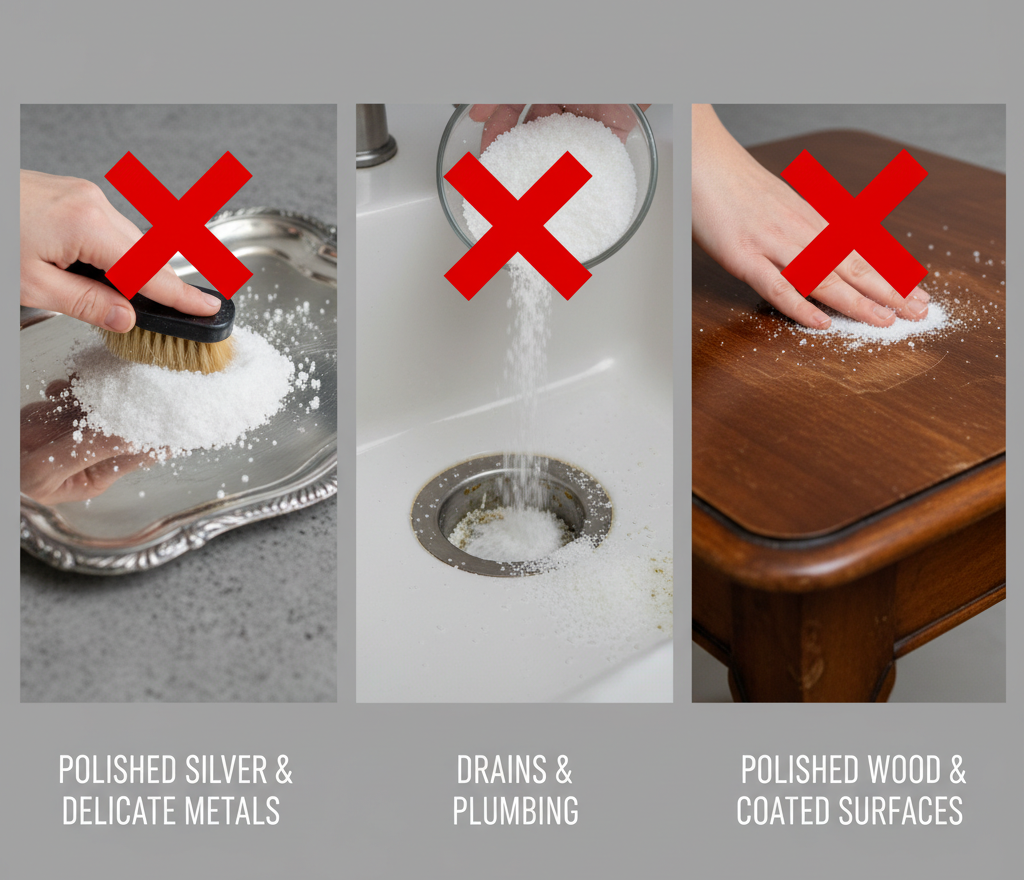
10.Raw Material
In its essence, coarse salt is a raw material provided by nature, a simple compound that, through its physical form and chemical properties, offers a potent solution for a multitude of cleaning challenges. It scrubs, absorbs, deodorizes, and sanitizes, all without the complex chemical formulas and artificial scents of many modern cleaning products. Its effectiveness in cutting through grease, lifting stains, and sanitizing surfaces like cutting boards and cast iron makes it an indispensable, eco-friendly, and profoundly functional tool in maintaining a clean home.
From scrubbing cast iron with coarse salt to lifting stubborn stains from carpet, these natural methods are effective for specific, tough tasks. While salt is a powerful ally for certain jobs, a truly comprehensive home cleaning requires broader expertise and a range of solutions. Toronto Shine Cleaning offers professional services to handle every surface with the correct, safe, and effective approach, ensuring a deep and lasting clean throughout your entire home.













